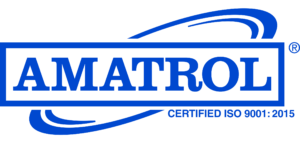
Click HERE to view Perkins V: What You Need to Know as a multimedia presentation.
On July 31, 2018, the president signed into law the Strengthening Career and Technical Education for the 21st Century Act, more commonly known as Perkins V. The law provides approximately $1.3 billion each year to help schools grow and improve their Career and Technical Education (CTE) programs.
Educators and industry leaders understand how important CTE programs are in the effort to create a pipeline of skilled workers able to succeed in the technologically-advanced jobs available today and into the future. In this article, Amatrol will show you how you can leverage new aspects of Perkins V to make your voice heard in the fight for future CTE funding.
 What Is Perkins V?
What Is Perkins V?
Today, industry leaders across every sector and around the world face the same struggle: finding highly-skilled workers to fill the many open positions throughout industry. This lack of sufficient skilled workers to fill available positions is known as the “skills gap,” and it’s a huge problem everywhere you look.
One of the areas where industry leaders look for a solution is the source of many of their future workers: the nation’s high schools and colleges. However, high school and college CTE programs can only create a pipeline of skilled graduates if they’re effectively teaching the skills industry needs.
That’s why continued funding of CTE programs across the nation is so important. Perkins V reauthorized and updated the Carl D. Perkins Career and Technical Education Act of 2006 (Perkins IV), reflecting the federal government’s continued commitment to provide approximately $1.3 billion each year to help CTE programs grow and improve to meet the demands of an economy being rapidly transformed by the Fourth Industrial Revolution.
Perkins V funds are administered at the state level by designated agencies, such as state education agencies (SEAs), postsecondary systems, standalone CTE agencies, and workforce development boards. These agencies must submit an initial state plan to the U.S. Department of Education by April 2020.
These plans outline how each state proposes to divide up their funds to eligible recipients at the local level. According to Advance CTE, potential local recipients of Perkins V funds include: “comprehensive high schools, technical high schools, area technical centers, career academies, community and technical colleges, early college high schools, public charter schools, pre-apprenticeship/youth apprenticeship programs, Indian Tribes,” and a variety of tribal organizations.
Perkins V gives local recipients of funding plenty of flexibility in the ways in which they can use funds to support CTE. For example, funds can be used for a wide variety of activities, such as:
- “Professional development and technical assistance
- Creation of new, innovative programs of study
- Support for implementation and continuous improvement of existing programs of study
- Career exploration, guidance and advisement
- Data collection and analysis, including program and plan evaluation and monitoring”
 What’s New in Perkins V?
What’s New in Perkins V?
According to the Council of Chief State School Officers (CCSSO), Perkins V represents “the first reauthorization of the Federal CTE statute in more than a decade.” Thus, it’s no surprise that the new law has a few significant updates.
Indeed, CCSSO notes that Perkins V:
“gives states added flexibility in administering their career and technical education (CTE) programs; promotes innovative practices in CTE; and calls for extensive collaboration among state- and local-level secondary, postsecondary, business, and other partners in the development and implementation of high-quality CTE programs that prepare students to gain employment in high-skill, high-wage, and high-demand occupations that meet state and local workforce needs.”
As summarized by Advance CTE, Perkins V contains several important new elements. For example, the new law:
- “introduces a comprehensive local needs assessment that requires data-driven decision-making on local spending, involves significant stakeholder consultation and must be updated at least once every two years,”
- “lifts the restriction on spending funds below grade 7 and allows support for career exploration in the ‘middle grades’ (which includes grades 5-8),”
- “increases the focus on serving special populations,”
- “increases the allowable reserve fund to 15 percent to spur local innovation and implement programs of study,” and
- “creates a new competitive grant program within national activities focused on innovation and modernization.”
What does all of this mean for those of you in education and industry who are fighting to create the best CTE programs that teach students the skills that local industries need? According to the Association for Career & Technical Education (ACTE), Perkins V places a new “focus on industry and stakeholder input to ensure real-world, relevant curriculum and programs of study.”
As the CCSSO concludes, “Perkins V creates an opportunity for stakeholders to play a more active role in the creation of state policy and for SEAs to build new relationships they can continue through implementation, evaluation and into the launch of new initiatives.”
For those wondering what this might look like, Perkins V requires that a state must:
- “hold public hearings,”
- “develop its plan in consultation with a wide variety of stakeholders, such as representatives of secondary and postsecondary CTE, community organizations, representatives of special populations, and the business community,”
- “consult with a wide range of stakeholders in developing its ‘state-determined levels of performance,’” and
- provide for “continued stakeholder consultation in ongoing implementation of the plan.”
How Can You Make Your Voice Heard?
The CCSSO notes that the “goals of Perkins V engagement should be for stakeholders to leave feeling heard, informed and aware of how they can stay involved and for stakeholder input to have a real impact on a state’s Perkins plan, and subsequently its CTE programs.” So how can you make your voice heard?
ACTE recommends that local leaders begin with the comprehensive local needs assessment (CLNA). Perkins V requires that all local eligible recipients of funds conduct a CLNA and subsequently update it at least every two years.
According to ACTE, the CLNA represents both “a chance to take an in-depth look at your entire local CTE system [to] identify areas where targeted improvements can lead to increased opportunities for student success” and “a powerful opportunity to engage stakeholders in a common understanding and vision for the future of CTE in your community.”
The CLNA thus gives educators, industry leaders, and a wide variety of other stakeholders a chance to make their voices heard in the funding process. For example, ACTE notes that Perkins V “names, at a minimum, the following participants who should engage in the initial needs assessment, local application development and ongoing consultation:
- CTE program representatives at the secondary and postsecondary levels, including teachers, faculty, administrators, career guidance and advisement professionals, and other staff
- State or local workforce development board representatives
- Representatives from a range of local businesses and industries
- Parents and students
- Representatives of special populations
- Representatives from agencies serving at-risk, homeless and out-of-school youth
- Representatives from Indian Tribes or Tribal organizations, where applicable”
For educators, the CLNA represents an opportunity to connect with students, parents, and representatives from local communities and industries to shape future CTE programs to best serve the interests of both students and future employers.
Likewise, employers and industry representatives can play an important role in developing the CLNA. They possess critical information about the local job market, including available jobs and the types of skills they require. Sharing their expertise with educators and local community leaders will help to ensure that CTE programs meet the needs of local industry.
Need Expert CTE Advice? Contact Amatrol!
After more than three decades designing and manufacturing state-of-the-art training systems, Amatrol remains the world’s leader in skills-based, interactive technical learning. What truly sets Amatrol apart is its integration of in-depth multimedia eLearning curriculum with hands-on trainers that teach relevant skills with real-world industrial components.
Our comprehensive learning solutions include a variety of programs perfect for high school CTE programs:
Additionally, Amatrol offers preparation for the following real-world industrial certification:
Encourage your local school administrators, CTE instructors, and industry leaders to contact Amatrol to learn how they can leverage its technical training expertise to create a high-quality CTE program that will prepare students for the workplace of the future.
About Duane Bolin
Duane Bolin is a former curriculum developer and education specialist. He is currently a Marketing Content Developer for Amatrol, Inc. Learn more about Amatrol and its technical training solutions, including eLearning, here and connect with Duane on Amatrol’s Twitter, Facebook, LinkedIn, and YouTube pages.






